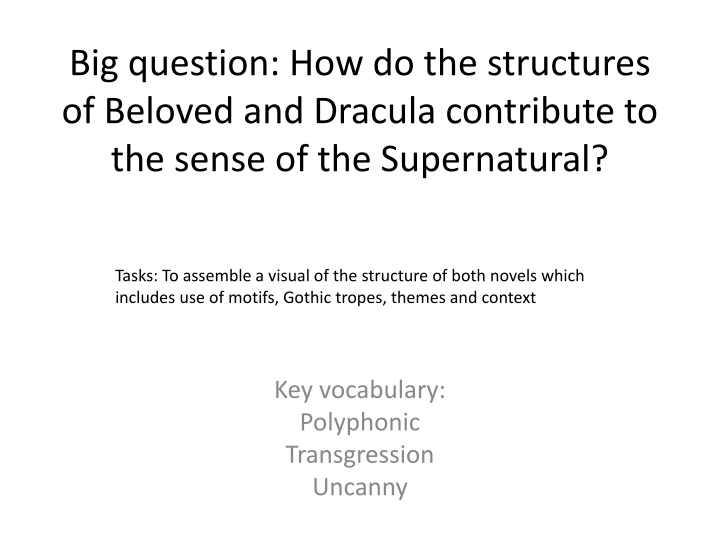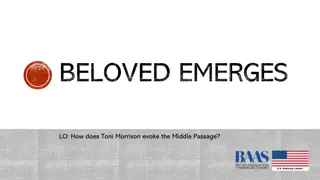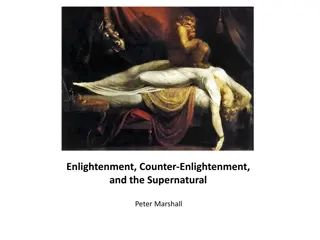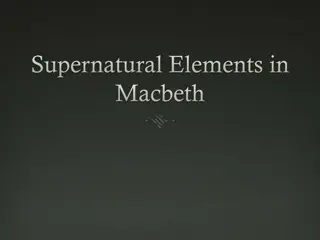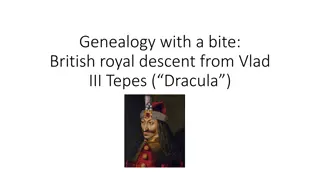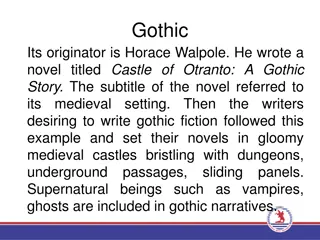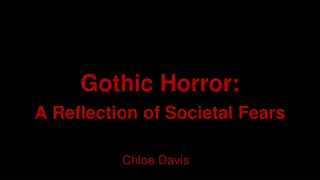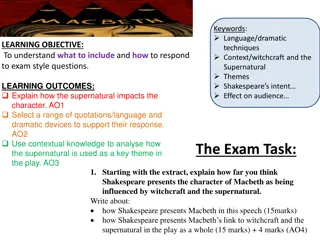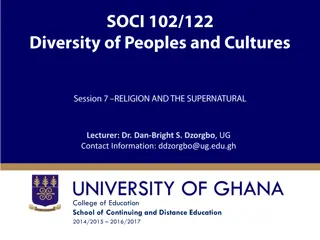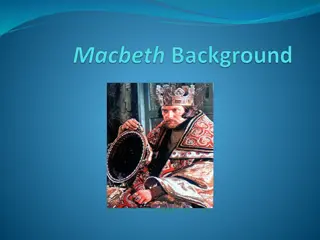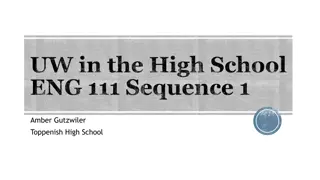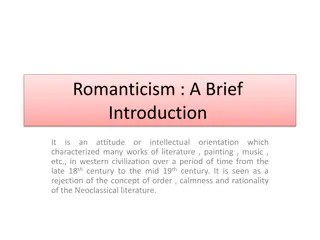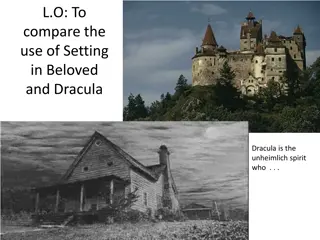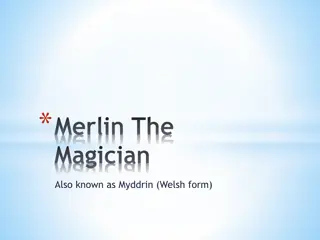Analyzing Supernatural Elements in the Structures of Beloved and Dracula
Explore the influence of structure on the supernatural in Beloved and Dracula through motifs, Gothic tropes, themes, and context. Understand the concepts of polyphonic, transgression, and the uncanny in relation to the novels, while considering elements like multiple voices, shifting identities, and eerie unfamiliarity. Dive into the Gothic features outlined by Eve Kosovsky Sedgwick and the interplay of realism and moral dimensions in 19th-century literature.
Download Presentation

Please find below an Image/Link to download the presentation.
The content on the website is provided AS IS for your information and personal use only. It may not be sold, licensed, or shared on other websites without obtaining consent from the author.If you encounter any issues during the download, it is possible that the publisher has removed the file from their server.
You are allowed to download the files provided on this website for personal or commercial use, subject to the condition that they are used lawfully. All files are the property of their respective owners.
The content on the website is provided AS IS for your information and personal use only. It may not be sold, licensed, or shared on other websites without obtaining consent from the author.
E N D
Presentation Transcript
Big question: How do the structures of Beloved and Dracula contribute to the sense of the Supernatural? Tasks: To assemble a visual of the structure of both novels which includes use of motifs, Gothic tropes, themes and context Key vocabulary: Polyphonic Transgression Uncanny
What do the following mean? Polyphonic Transgression Uncanny/Heimlich In what way are these words relevant to Beloved and Dracula? Polyphonic: multiple voices Transgression: crossing boundaries, uncertainty, shifting identity Uncanny: has to do with a sense of strangeness, mystery or eeriness. It concerns a sense of unfamiliarity which appears at the very heart of the familiar (or vice versa). It s a disturbance of the familiar Heimlich: literally means homely or familiar but it can also mean concealed, hidden from sight, secret
Eve Kosovsky Sedgwick summarises the features of Gothic writing as follows: Setting: Often in a Catholic European country. Includes an oppressive ruin or castle in a wild country Story features: a heroine of sensitivity; her impetuous lover; a tyrannical older man ( with a piercing gaze ) who is intent on imprisonment, rape and murder There is a great interest in: religious institutions, sleeplike or trancelike states, subterranean spaces and live burial; doubles; the damaging effect of guilt and the discovery of family ties; Hints of incest The form: discontinuous and involuted There are likely to be unnatural echoes or silences Emphasis placed on the difficulties of communication Are there any of these in Beloved? Dracula? Remember these tropes can always be subverted
19th century belief: Art should have a moral purpose Rise of realism in the 19th century (Ibsen, Flaubert). Moving away from stories about nobility/gods towards those about real people In real life, good doesn t always prosper. The kind of ending where evil is always defeated runs counter to our sense of reality One way to deal with this is for a text to function on more than one level Illusion of real world is offered by providing convincing details of setting and character while suggesting, by means of fantasy, a significant moral dimension. This could be called a realist aesthetic The return of the Gothic in the 19th century is part of a renewed interest in the irrational (dream, fantasy, multiplication of the self). For instance: Frankenstein; Dr Jekyll and Mr Hyde; The Portrait of Dorian Grey
We can reduce mythical stories to two sentences, for instance: A. Frankenstein makes a living creature out of bits of corpses B. The creature turns against him and runs amok You try it for Dracula and Beloved . . . A. Dracula, a monster, sets out to create more vampires B. After initial success, his attempts are eventually defeated and he is exterminated A. The ghost of a baby murdered by her mother returns to haunt her B. The ghost is defeated and in the process her sister is freed
What do Frankenstein; Dr Jekyll and Mr Hyde; The Portrait of Dorian Grey, Dracula and Beloved have in common? Monsters Creation Transgressing the boundaries between life and death
Narrative structure Omniscient narrator is an authoritative, guiding voice What happens when you take it away? Gaps, puzzles (voices not heard; newspaper articles, ships logs) Anxieties, uncertainties, distrust First person narrator gives immediacy and increases the sense of horror Polyphonic text/multiple narrators creates confusion and distrust
Quilts and slavery We need to remember before we move on. Only by remembering the past can there be liberation from its burden. Memory is by its very nature fractured and unclear
Time to work now!!! Beloved: Blu, Michelle, Tobe, Maya 1. Recreate Beloved as a linear, chronological narrative 2. Create a structure map Dracula: Lachlan, Megan, Ghenwa 1. Create a structure map
Beloved: Part 1 Section 1 Heading: (see following slide) Themes Motifs used What happens POV How is their voice conveyed? Effect Past The taking of the milk Present Gothic tropes Key moments, page numbers and quotes Context
Dracula: Pt 1 Themes Motifs used What happens Narrator/Form How is their Effect voice conveyed? Gothic tropes Key moments, page numbers and quotes Context
Headings for Beloved Chaos Rememorying Exorcising the past Loss of Self Unburying the past Looking to the future Reclamation of Self Atonement Understanding Order resroration
